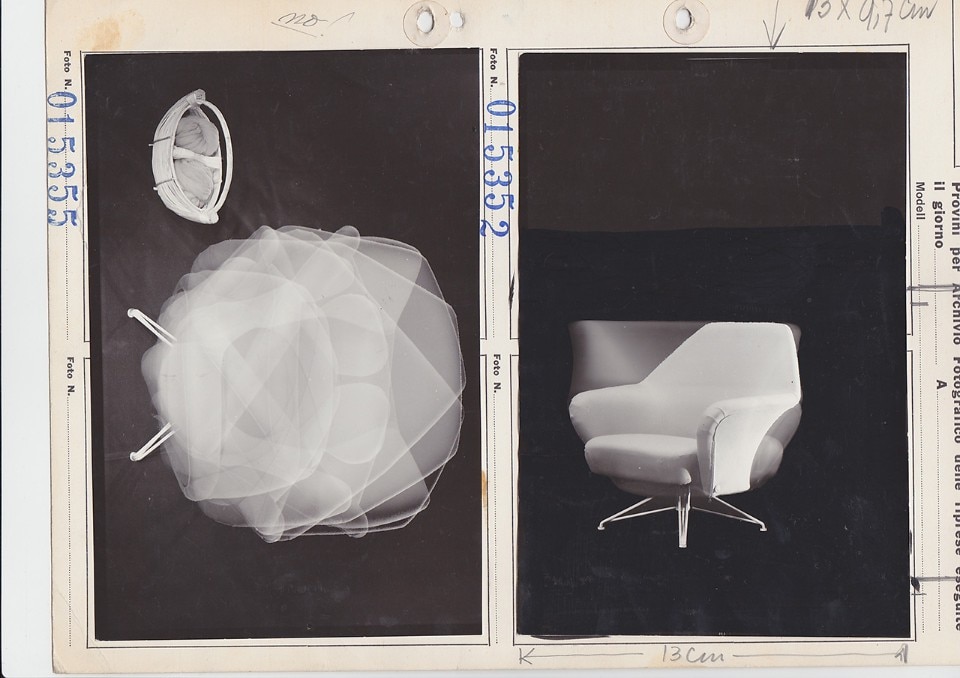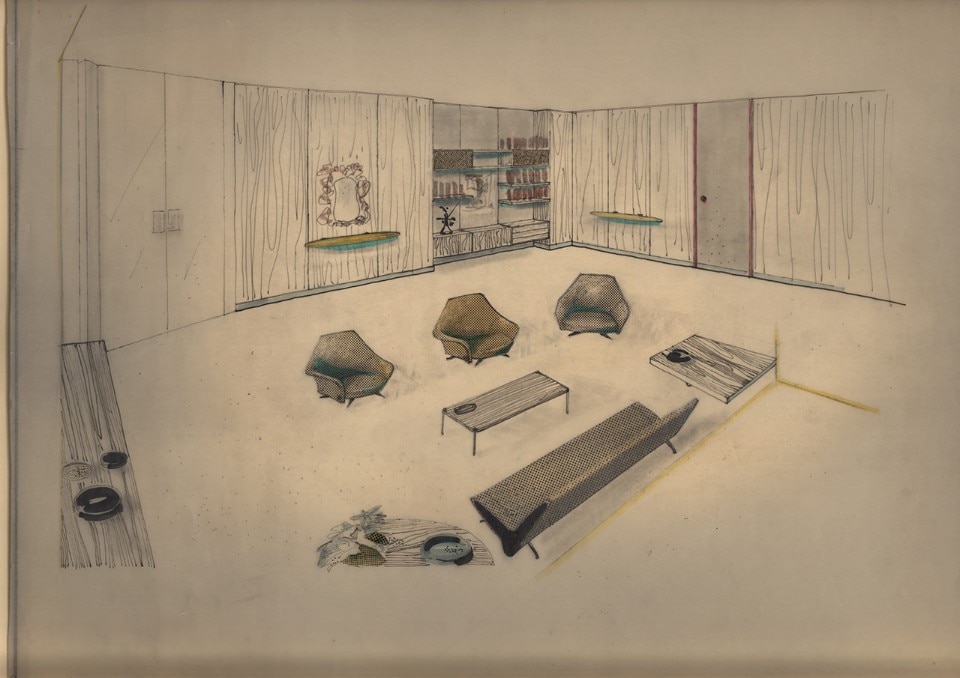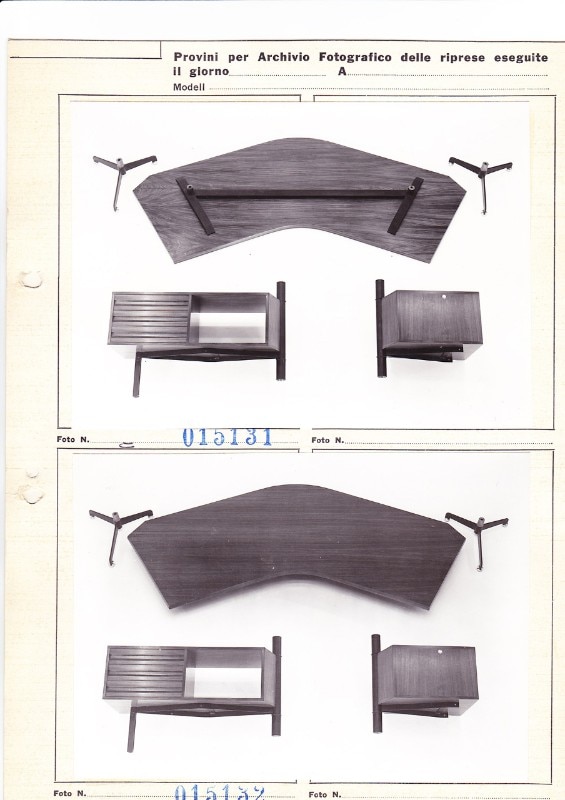In the history of contract work, the furnishing of big office buildings – and interiors for the service sector, generally speaking – was one of the most prolific and consolidated branches of business. Although Italy began doing this type of work later than other industrialised countries, it nonetheless represented on an international level an innovative model of industrial design, thanks to several excellent cases. After a few experimental projects such as Gio Ponti’s design for Palazzo Montecatini in Milan in 1936, and Giuseppe Pagano’s work for the Bocconi University in Milan in 1941, it wasn’t until the early 1950s that an actual industrial programme for an integrated office system was devised and applied to a big building.
The entrepreneur Enrico Mattei and the designer/ furniture producer Osvaldo Borsani are the two emblematic figures involved. Mattei commissioned Borsani to furnish the first Palazzo ENI in San Donato Milanese in 1956, which became a milestone in the design of office furniture conceived as an integrated system in response to a contract job. In 1953, Mattei became president of the brand-new oil and gas company Ente Nazionale Idrocarburi (ENI). After the devastation of World War II, ENI aimed to contribute to Italy’s economic rebirth. After a brilliant stint of drilling for methane gas in Northern Italy, Mattei succeeded in gaining important licensing contracts for the exploitation of North African crude oil, “snatching” the deal away from the monopoly of the “seven sisters”, a term he coined to designate the then dominant transnational oil companies.

 View gallery
View gallery

Borsani and Mattei. A major contract
Photos by Edoardo Mari. Courtesy of Archivio Osvaldo Borsani
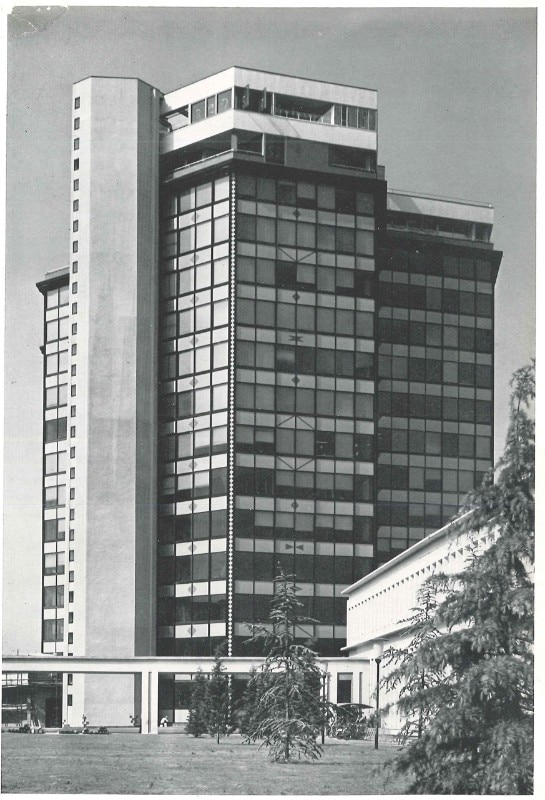
Borsani and Mattei. A major contract
Marcello Nizzoli and Mario Oliveri, ENI office building in San Donato Milanese, 1955–1957.
Photos by Edoardo Mari. Courtesy of Archivio Osvaldo Borsani
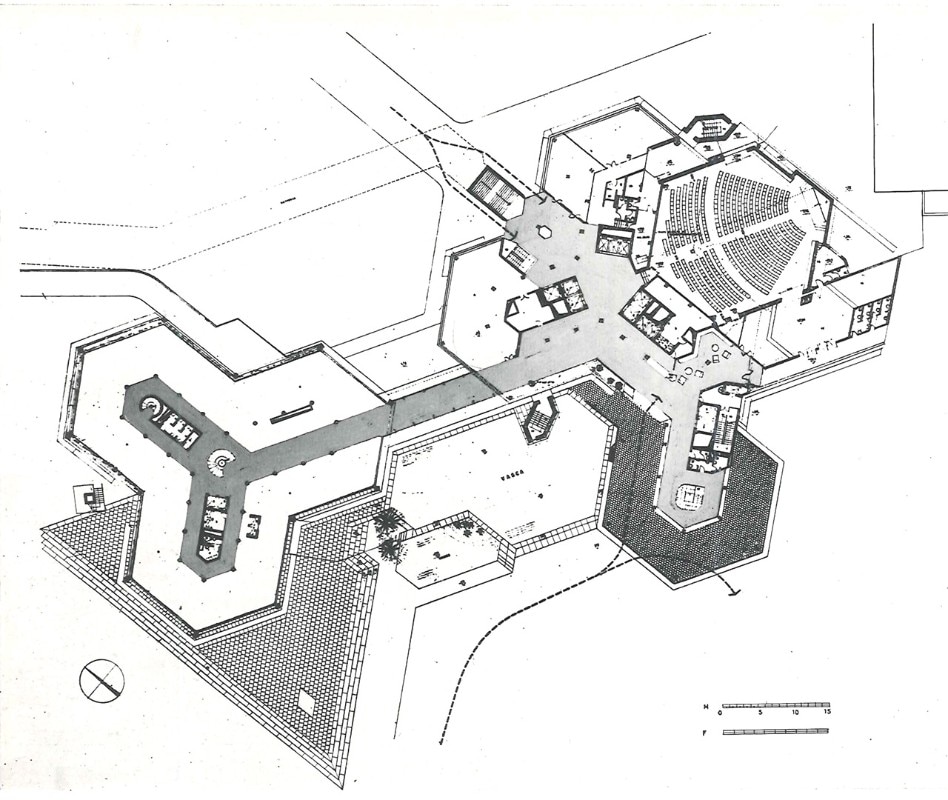
Borsani and Mattei. A major contract
Ground-floor plan by Marcello Nizzoli and Mario Oliveri
showing the auditorium of the ENI office building in San Donato Milanese, 1955–1957.
Photos by Edoardo Mari. Courtesy of Archivio Osvaldo Borsani
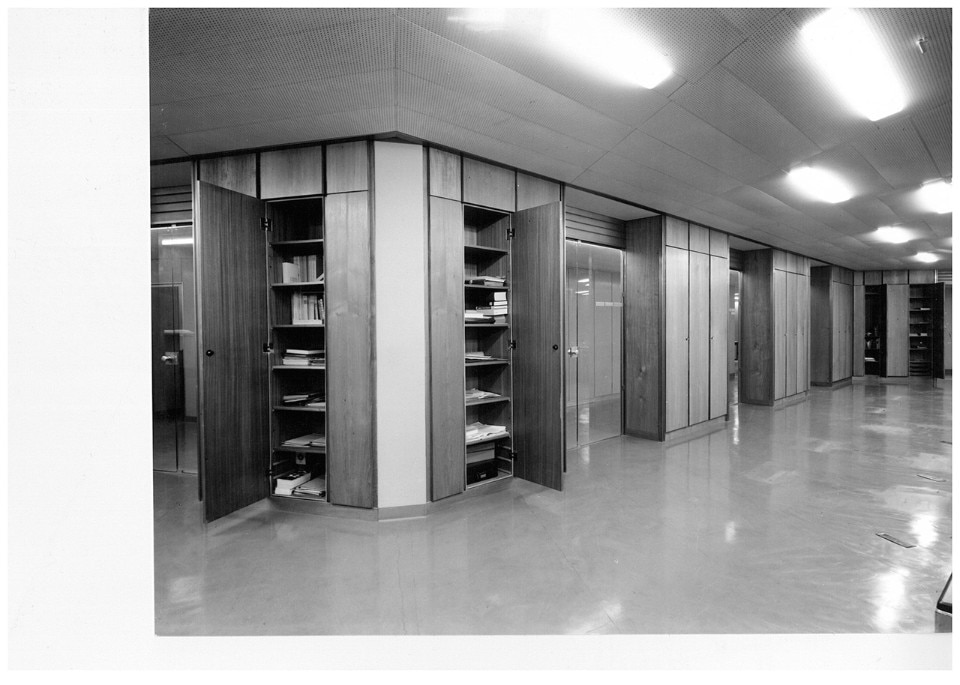
Borsani and Mattei. A major contract
Modular wooden cabinetry used as partitioning accessed from
the common areas.
Photos by Edoardo Mari. Courtesy of Archivio Osvaldo Borsani
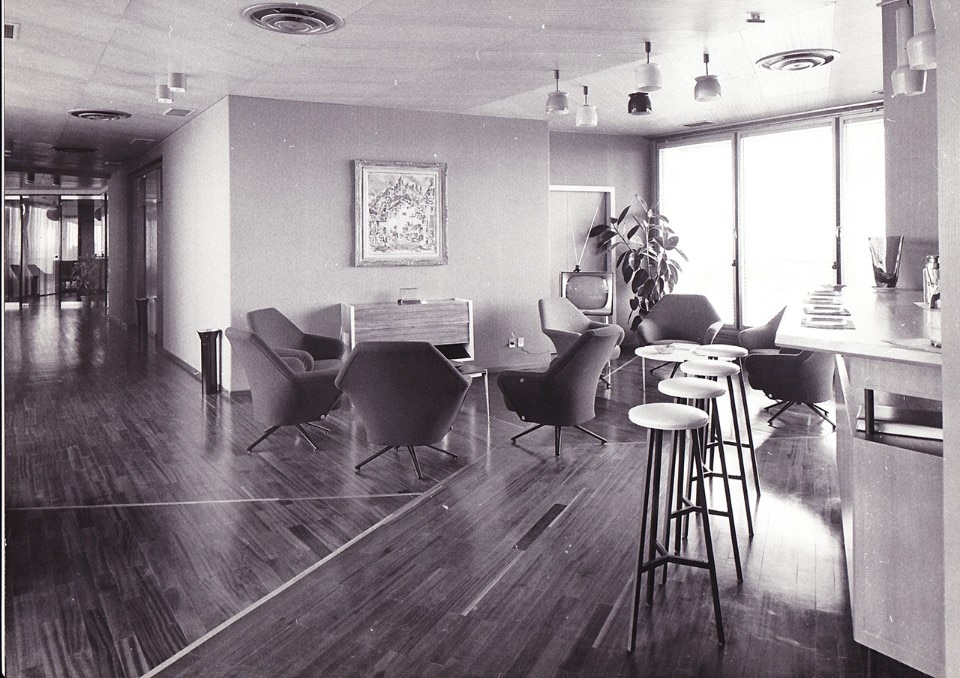
Borsani and Mattei. A major contract
Photos by Edoardo Mari. Courtesy of Archivio Osvaldo Borsani
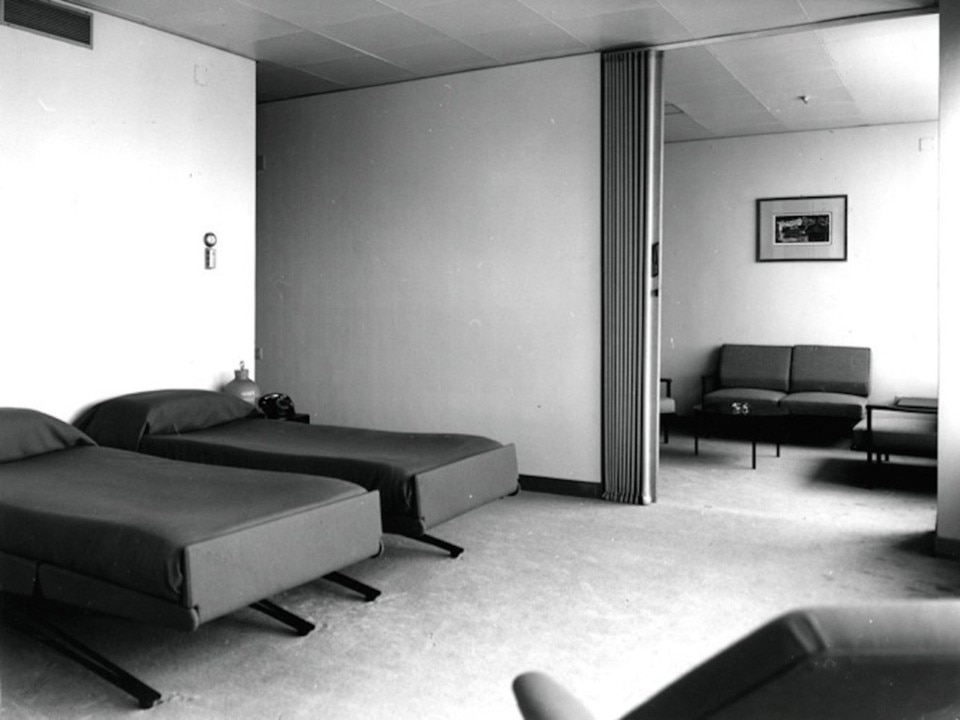
Borsani and Mattei. A major contract
Perspective drawing and photograph of a bedroom (above) in
the guest apartments, furnished with two L77 beds, 1955–56.
Photos by Edoardo Mari. Courtesy of Archivio Osvaldo Borsani
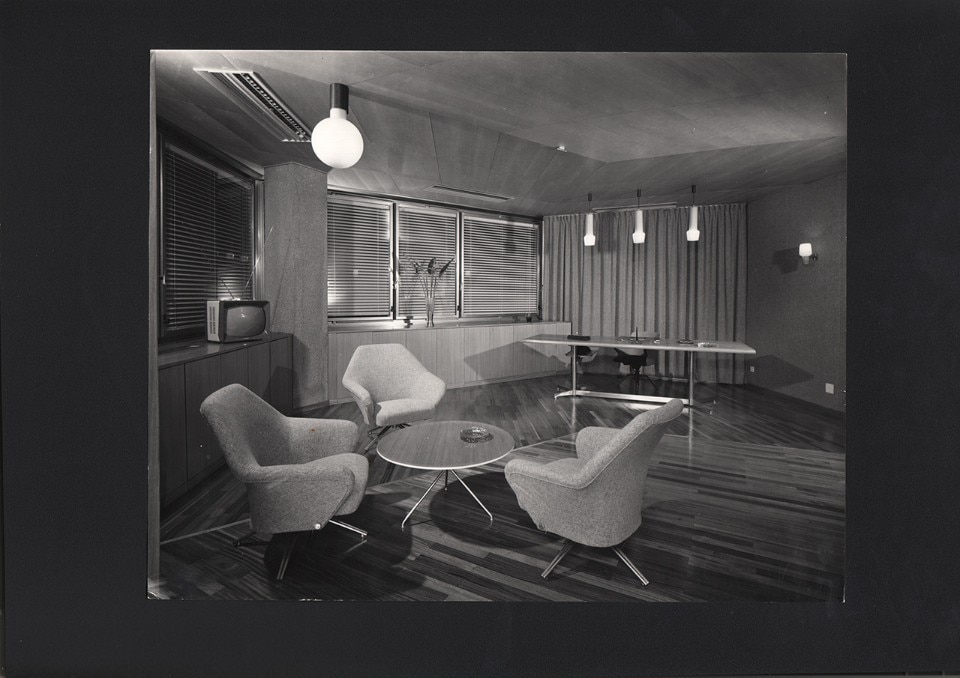
Borsani and Mattei. A major contract
Enrico Mattei’s private office, furnished with three P32
armchairs around a T44 coffee table. In the background stand the T58 table with P39 chair.
Photos by Edoardo Mari. Courtesy of Archivio Osvaldo Borsani
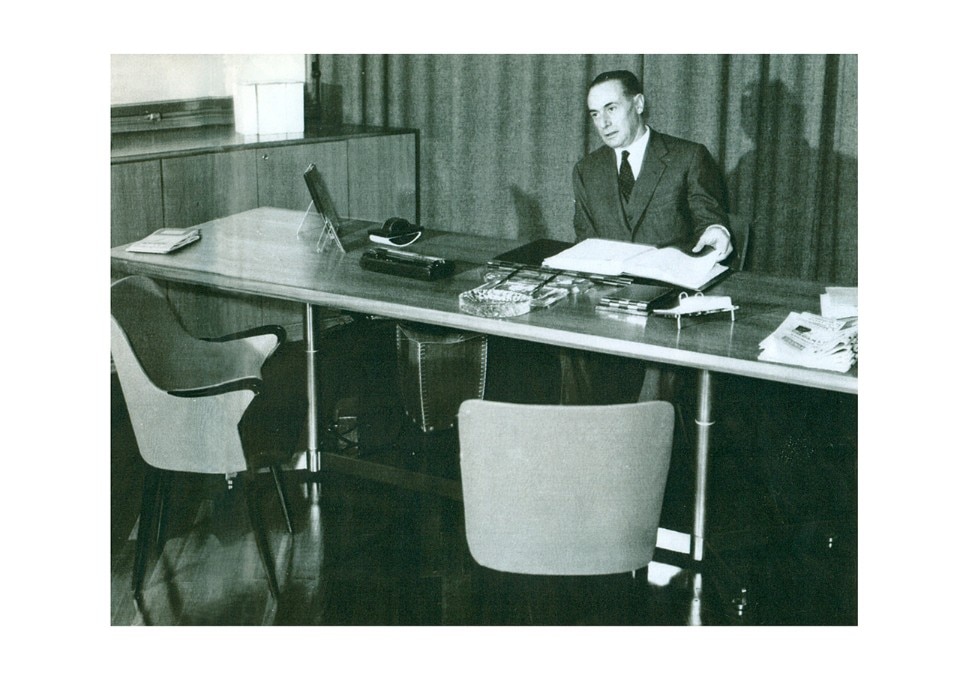
Borsani and Mattei. A major contract
The president of ENI, Enrico Mattei, in his office seated on the P 39 chair at the T58 table. Across the table stand two P38 chairs. The 6638 waste-paper basket sewn from sheets of leather was made by ABV, designed in 1946.
Photos by Edoardo Mari. Courtesy of Archivio Osvaldo Borsani
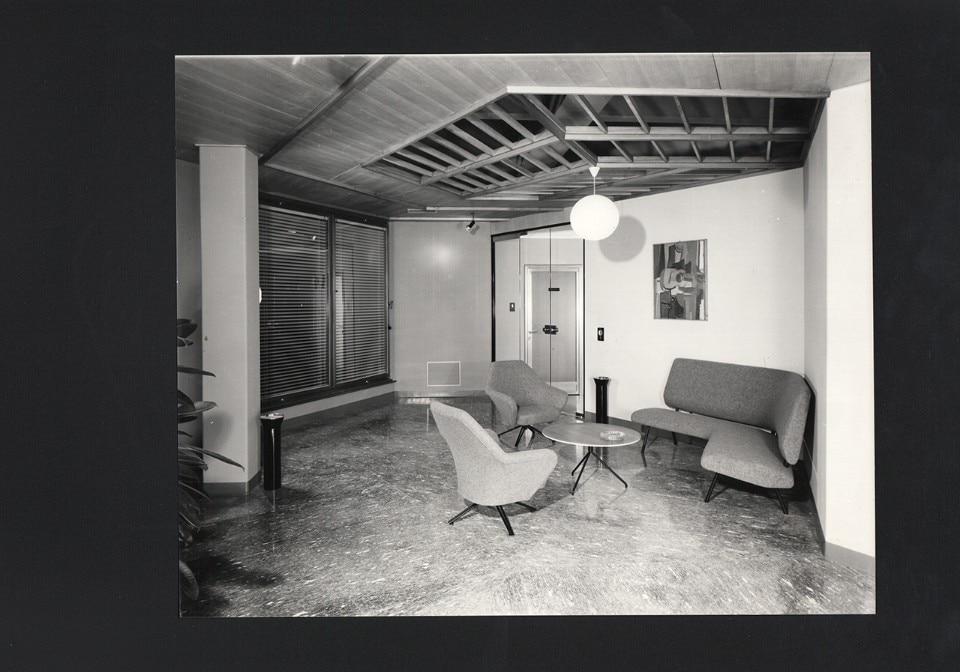
Borsani and Mattei. A major contract
A lounge and waiting room inside the ENI office building, 1956.
Photos by Edoardo Mari. Courtesy of Archivio Osvaldo Borsani
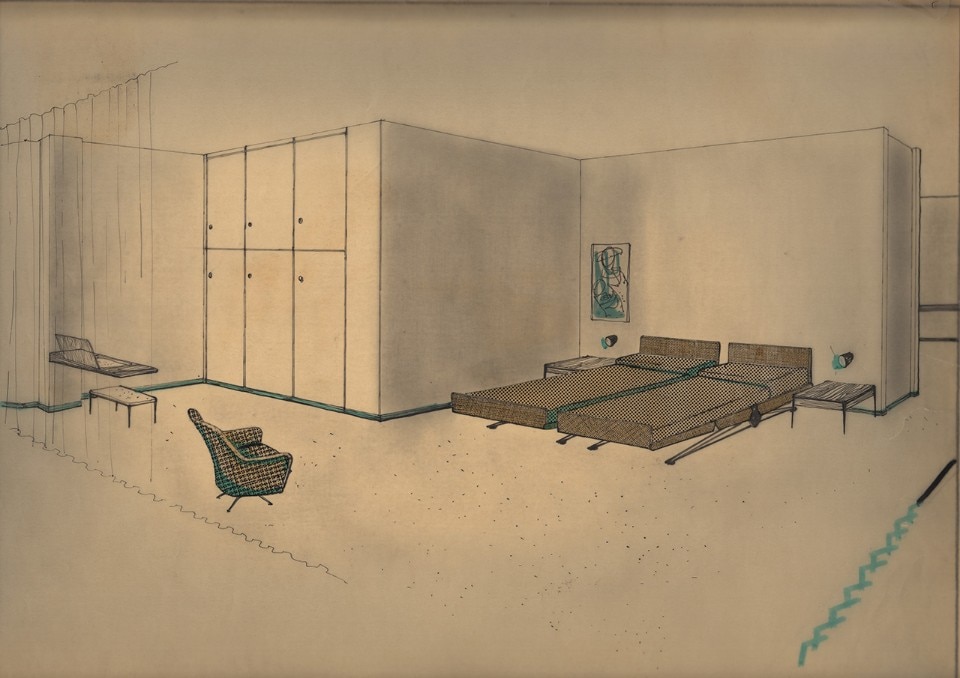
Borsani and Mattei. A major contract
Osvaldo Borsani, perspective drawing of a lounge and waiting room in the executive quarters, 1956.
Photos by Edoardo Mari. Courtesy of Archivio Osvaldo Borsani

Borsani and Mattei. A major contract
Photos by Edoardo Mari. Courtesy of Archivio Osvaldo Borsani

Borsani and Mattei. A major contract
Marcello Nizzoli and Mario Oliveri, ENI office building in San Donato Milanese, 1955–1957.
Photos by Edoardo Mari. Courtesy of Archivio Osvaldo Borsani

Borsani and Mattei. A major contract
Ground-floor plan by Marcello Nizzoli and Mario Oliveri
showing the auditorium of the ENI office building in San Donato Milanese, 1955–1957.
Photos by Edoardo Mari. Courtesy of Archivio Osvaldo Borsani

Borsani and Mattei. A major contract
Modular wooden cabinetry used as partitioning accessed from
the common areas.
Photos by Edoardo Mari. Courtesy of Archivio Osvaldo Borsani

Borsani and Mattei. A major contract
Photos by Edoardo Mari. Courtesy of Archivio Osvaldo Borsani

Borsani and Mattei. A major contract
Perspective drawing and photograph of a bedroom (above) in
the guest apartments, furnished with two L77 beds, 1955–56.
Photos by Edoardo Mari. Courtesy of Archivio Osvaldo Borsani

Borsani and Mattei. A major contract
Enrico Mattei’s private office, furnished with three P32
armchairs around a T44 coffee table. In the background stand the T58 table with P39 chair.
Photos by Edoardo Mari. Courtesy of Archivio Osvaldo Borsani

Borsani and Mattei. A major contract
The president of ENI, Enrico Mattei, in his office seated on the P 39 chair at the T58 table. Across the table stand two P38 chairs. The 6638 waste-paper basket sewn from sheets of leather was made by ABV, designed in 1946.
Photos by Edoardo Mari. Courtesy of Archivio Osvaldo Borsani

Borsani and Mattei. A major contract
A lounge and waiting room inside the ENI office building, 1956.
Photos by Edoardo Mari. Courtesy of Archivio Osvaldo Borsani

Borsani and Mattei. A major contract
Osvaldo Borsani, perspective drawing of a lounge and waiting room in the executive quarters, 1956.
Photos by Edoardo Mari. Courtesy of Archivio Osvaldo Borsani
Also in 1953, Osvaldo Borsani co-founded the aptly named Tecno company with his twin brother Fulgenzio. Tecno was to be a revolutionary manufacturer of industrially produced furniture. Borsani’s experience had begun in the late 1920s when as a youth he started working at Arredamenti Borsani Varedo (ABV), which made furnishing supplies. ABV had been founded by his father Gaetano Borsani in 1923. In the early 1930s, the young Borsani became the firm’s art director and designer. ABV was specialised in interiors for the upper-middle class, but at the same time, it cultivated an interest in the furnishing of small public spaces such as shops, bars, and the offices of high-grade professionals – in fact, these were the commercial activities of many of its clients.
Based on this background, it is easy to see one of the distinctive traits of the newborn Tecno, intimately connected to the origins of ABV. The bread and butter of Tecno was the design and production of serial furniture. But it also honoured a few requests for “special” projects, made-to-measure interiors that Tecno calls grandi lavori (big works) still today. The fundamental difference between ABV and Tecno was that the former executed made-to-measure on a small-to-medium scale (mostly houses), and the latter gradually became more interested in large buildings for collective use with complex technological problems such as airports, stations, hospitals and office buildings. The instance that started an important chapter in Italian contract work came about almost coincidentally thanks to the broad-mindedness and determination of a major emblematic figure in postwar Italy, Enrico Mattei.
It is said that one day, while he was in Milan visiting the office of the attorney Balestrini, a long-standing client at ABV, Mattei noticed the quality of the design and make of the furniture. The office was a picture of sobriety and elegance, so Mattei asked for the name of the manufacturer. The strong personalities of Borsani and Mattei immediately convened on the planes of concreteness, spirit of initiative and the sense of leadership in their respective fields. Tecno was first commissioned to renew and furnish the ENI offices on Via Tevere in Rome, but the first grande lavoro was the layout and furnishing of the interiors of the new ENI building in San Donato Milanese. The building was to be the final touch on Mattei’s citadel called Metanopoli, which he aimed to make an ideal city for ENI and its workers. The building was designed by Marcello Nizzoli and Mario Oliveri. The former had been a fundamental collaborator on the design of products and buildings at Olivetti, a company famous for its industrial design on an international level. In Italy, the “modern office” was an entirely new field to cultivate back then. Tecno had begun operations with a range of products published in a catalogue in 1954-55. Its attention was focused on the technical and efficient characteristics of this quickly evolving sector. The building designed by Nizzoli and Oliveri was in plan composed of hexagons spread out organically, generating indoor spaces that were interesting and unusual. Borsani’s design decision was to not force the composition by inserting preconstituted elements that would prove difficult to integrate. Rather he sought to interpret the slanted forms by inventing dynamic pieces of furniture, some of which were designed with the same generative principle as the building, making them more congenial to the layout devised by Nizzoli and Oliveri. And so Borsani went from being a mere decorator to an actual interpreter of the innovative concept of office work contained in Nizzoli and Oliveri’s design. Borsani’s proposal, certainly inspired by Mattei’s brave entrepreneurial vision, was based on an original and revolutionary concept of democratism in the furniture, brought to the workplace of the service sector. In a book on Borsani, Giuliana Gramigna writes, “The formal and technological solutions found here are multiple. Responding to a design characterised by advanced and uncommon features, Borsani created the boomerang-shaped desk T96. The shape seems to be the best for rooms with a hexagonal plan. The T96 later became part of the company’s range. Borsani built wall-cabinets placed between the offices and the hallways, where the wood decorations matched the patterns that distinguished the building’s outer structure.”
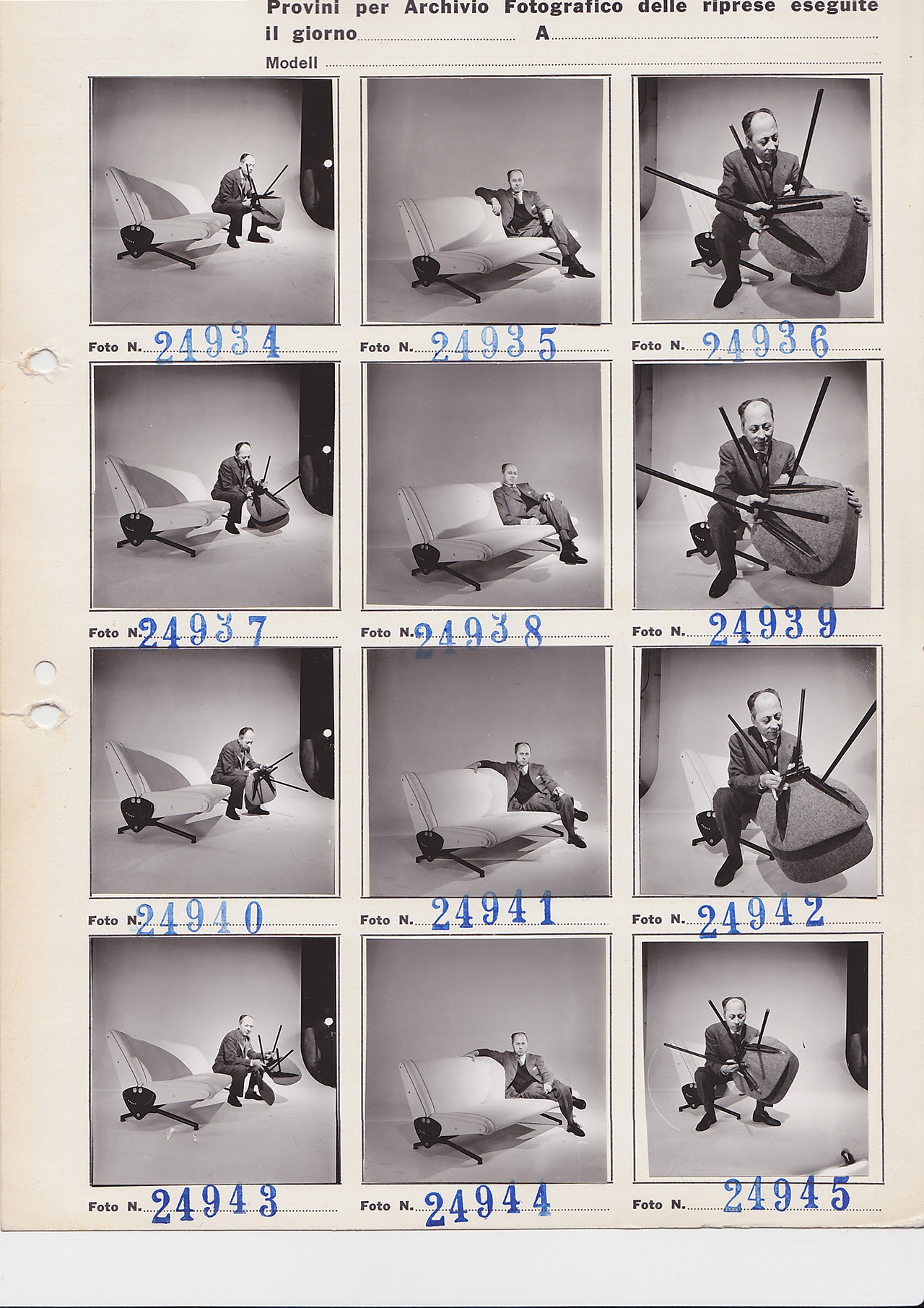
 View gallery
View gallery
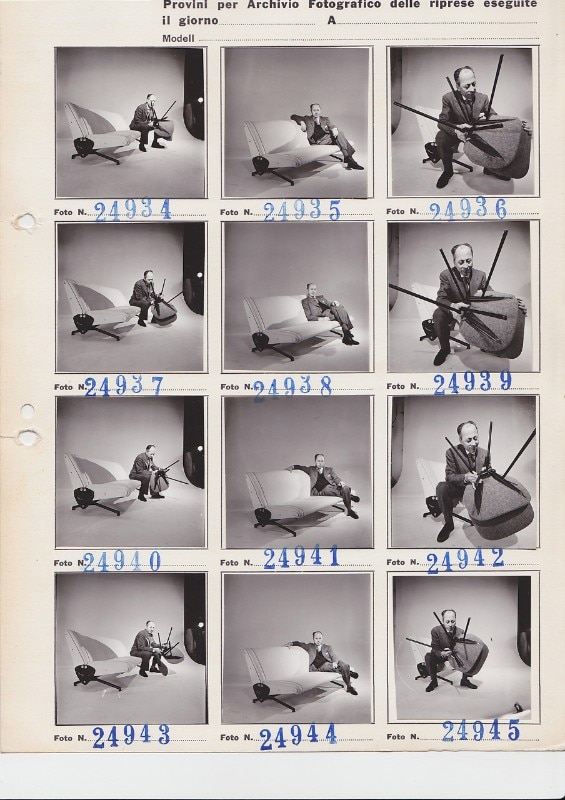
Borsani and Mattei. A major contract
Some of the pieces designed by Osvaldo Borsani for Tecno: P32 armchair, P39 chair, D70 sofa, L77 beds, T58 chaise longue.
Photos by Edoardo Mari. Archivio Osvaldo Borsani
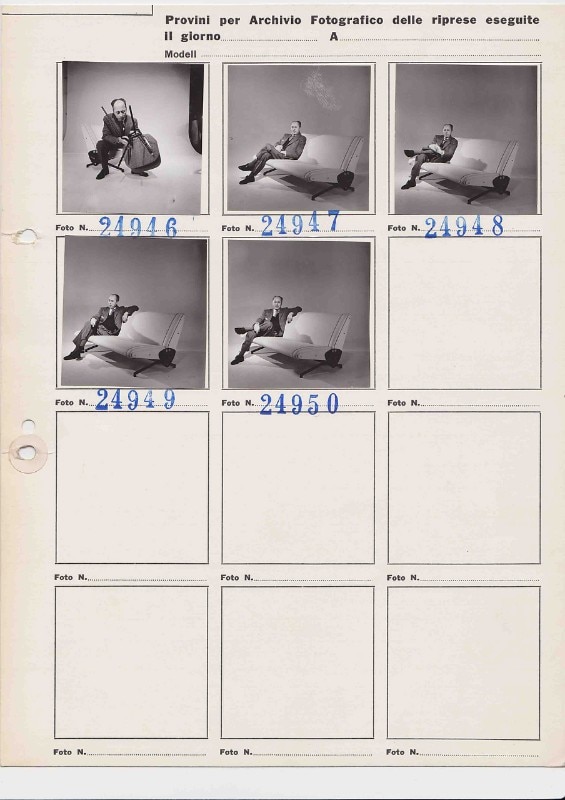
Borsani and Mattei. A major contract
Some of the pieces designed by Osvaldo Borsani for Tecno: P32 armchair, P39 chair, D70 sofa, L77 beds, T58 chaise longue.
Photos by Edoardo Mari. Archivio Osvaldo Borsani
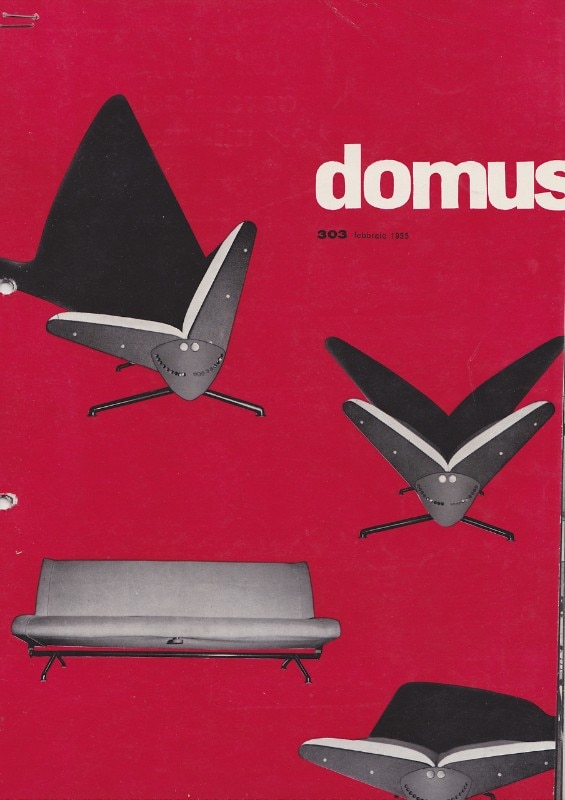
Borsani and Mattei. A major contract
Some of the pieces designed by Osvaldo Borsani for Tecno: P32 armchair, P39 chair, D70 sofa, L77 beds, T58 chaise longue.
Photos by Edoardo Mari. Archivio Osvaldo Borsani

Borsani and Mattei. A major contract
Some of the pieces designed by Osvaldo Borsani for Tecno: P32 armchair, P39 chair, D70 sofa, L77 beds, T58 chaise longue.
Photos by Edoardo Mari. Archivio Osvaldo Borsani

Borsani and Mattei. A major contract
Some of the pieces designed by Osvaldo Borsani for Tecno: P32 armchair, P39 chair, D70 sofa, L77 beds, T58 chaise longue.
Photos by Edoardo Mari. Archivio Osvaldo Borsani

Borsani and Mattei. A major contract
Some of the pieces designed by Osvaldo Borsani for Tecno: P32 armchair, P39 chair, D70 sofa, L77 beds, T58 chaise longue.
Photos by Edoardo Mari. Archivio Osvaldo Borsani
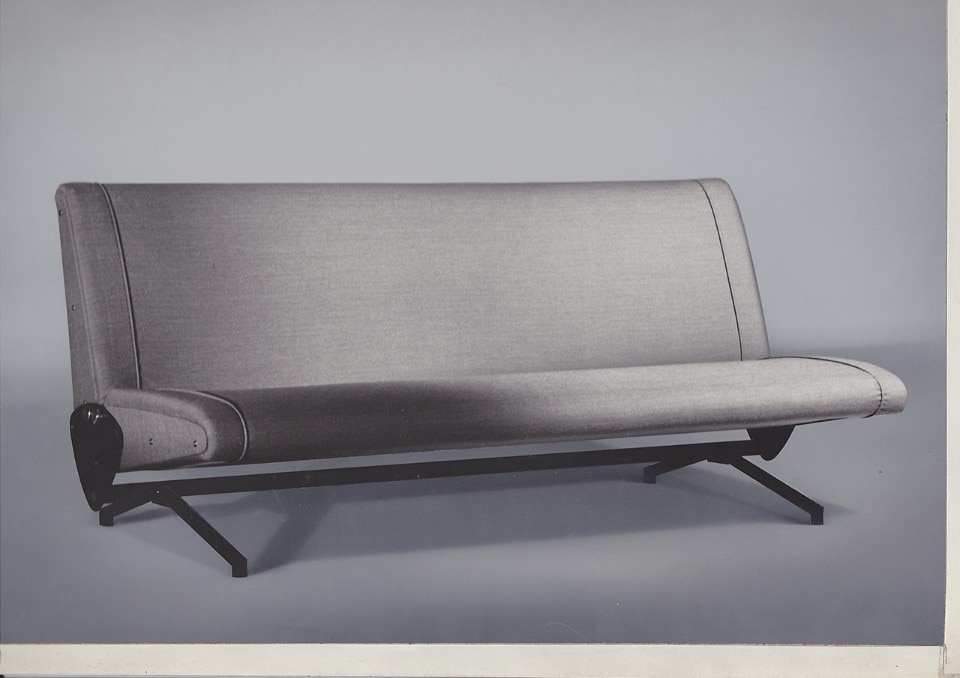
Borsani and Mattei. A major contract
Some of the pieces designed by Osvaldo Borsani for Tecno: P32 armchair, P39 chair, D70 sofa, L77 beds, T58 chaise longue.
Photos by Edoardo Mari. Archivio Osvaldo Borsani
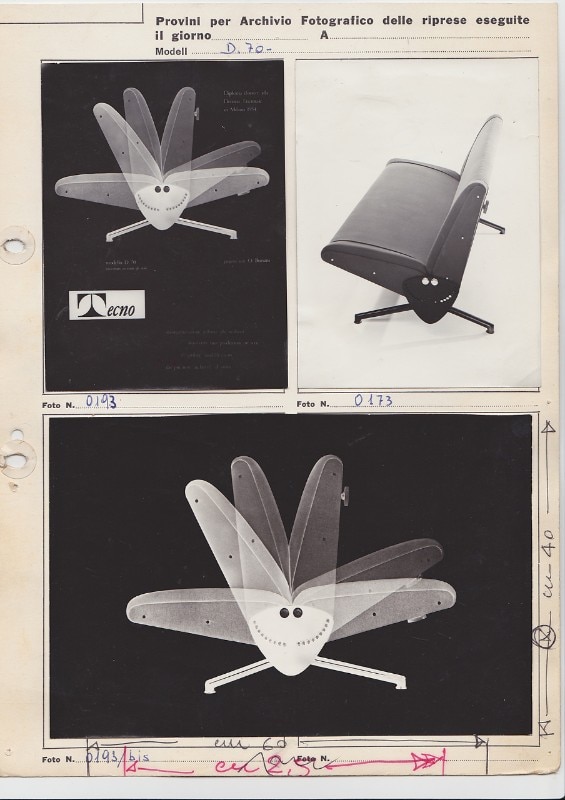
Borsani and Mattei. A major contract
Some of the pieces designed by Osvaldo Borsani for Tecno: P32 armchair, P39 chair, D70 sofa, L77 beds, T58 chaise longue.
Photos by Edoardo Mari. Archivio Osvaldo Borsani

Borsani and Mattei. A major contract
Some of the pieces designed by Osvaldo Borsani for Tecno: P32 armchair, P39 chair, D70 sofa, L77 beds, T58 chaise longue.
Photos by Edoardo Mari. Archivio Osvaldo Borsani

Borsani and Mattei. A major contract
Some of the pieces designed by Osvaldo Borsani for Tecno: P32 armchair, P39 chair, D70 sofa, L77 beds, T58 chaise longue.
Photos by Edoardo Mari. Archivio Osvaldo Borsani
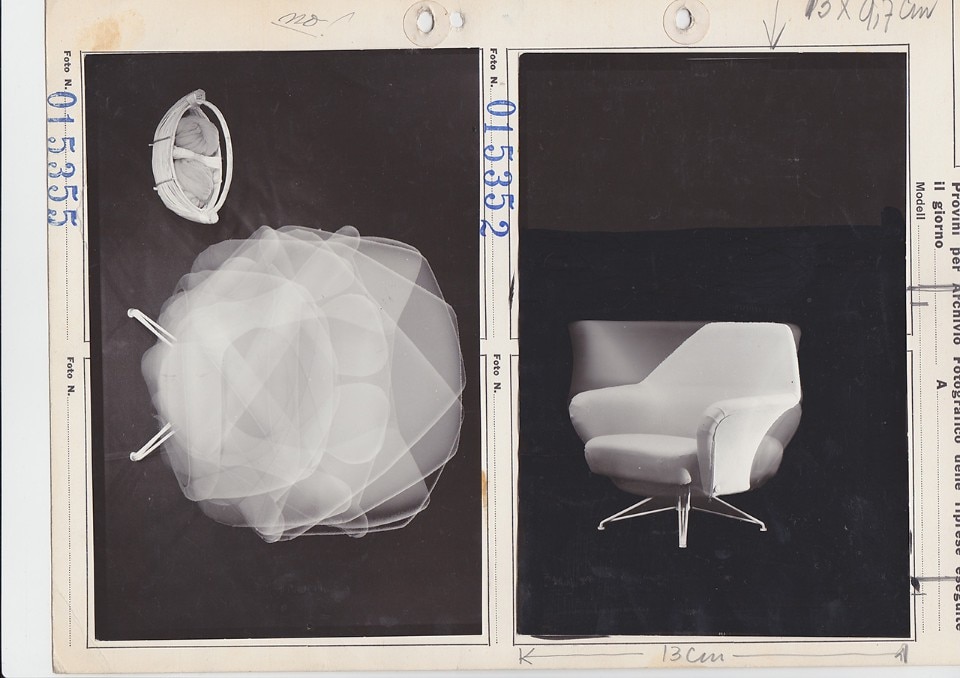
Borsani and Mattei. A major contract
Some of the pieces designed by Osvaldo Borsani for Tecno: P32 armchair, P39 chair, D70 sofa, L77 beds, T58 chaise longue.
Photos by Edoardo Mari. Archivio Osvaldo Borsani

Borsani and Mattei. A major contract
Some of the pieces designed by Osvaldo Borsani for Tecno: P32 armchair, P39 chair, D70 sofa, L77 beds, T58 chaise longue.
Photos by Edoardo Mari. Archivio Osvaldo Borsani
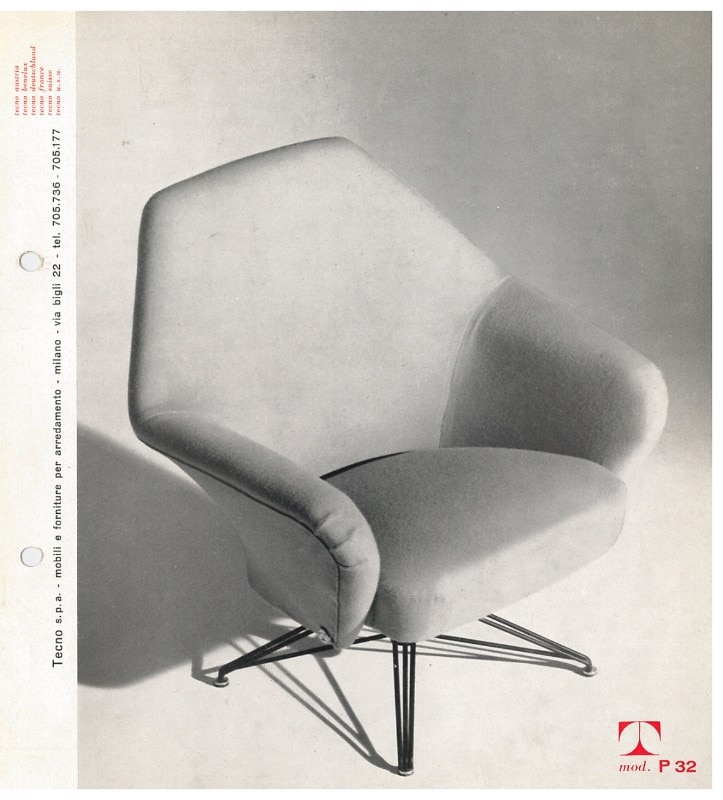
Borsani and Mattei. A major contract
Some of the pieces designed by Osvaldo Borsani for Tecno: P32 armchair, P39 chair, D70 sofa, L77 beds, T58 chaise longue.
Photos by Edoardo Mari. Archivio Osvaldo Borsani
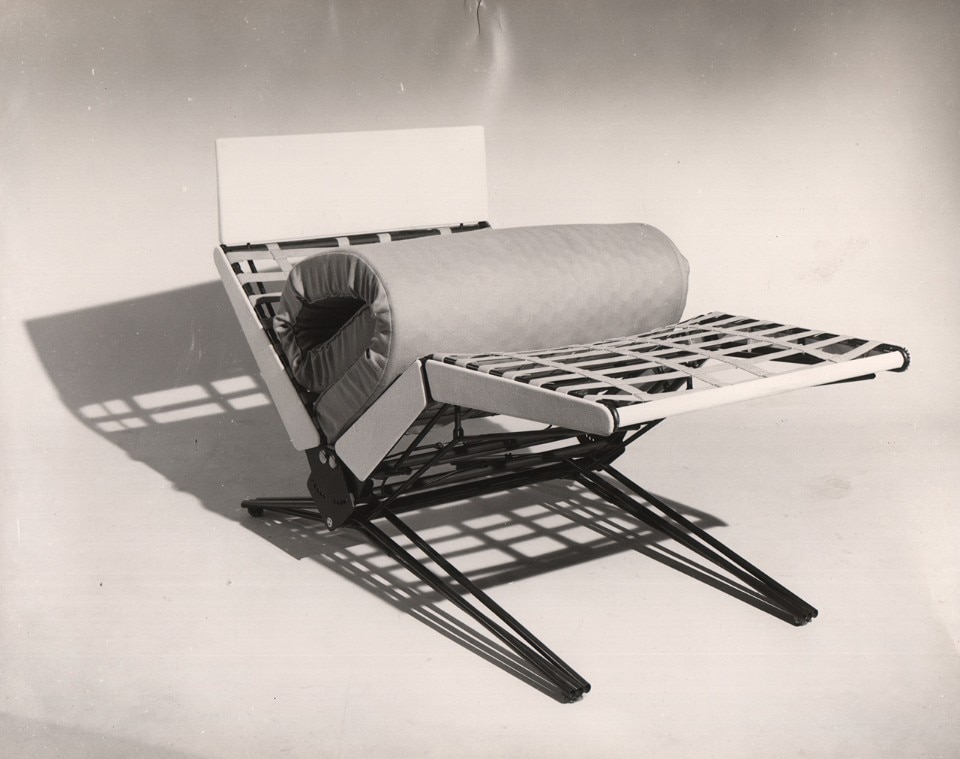
Borsani and Mattei. A major contract
Some of the pieces designed by Osvaldo Borsani for Tecno: P32 armchair, P39 chair, D70 sofa, L77 beds, T58 chaise longue.
Photos by Edoardo Mari. Archivio Osvaldo Borsani
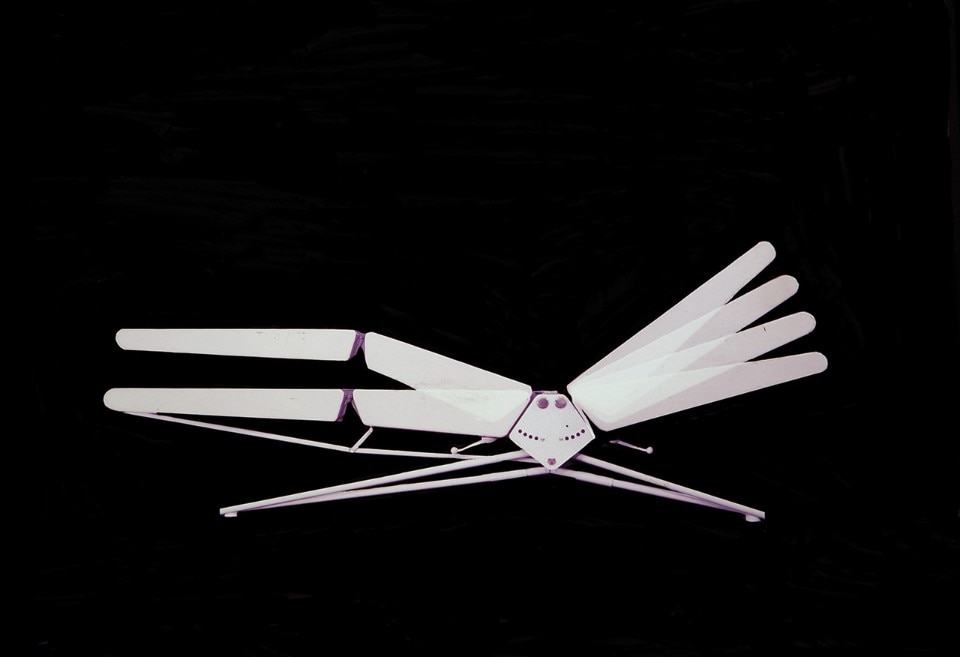
Borsani and Mattei. A major contract
Some of the pieces designed by Osvaldo Borsani for Tecno: P32 armchair, P39 chair, D70 sofa, L77 beds, T58 chaise longue.
Photos by Edoardo Mari. Archivio Osvaldo Borsani
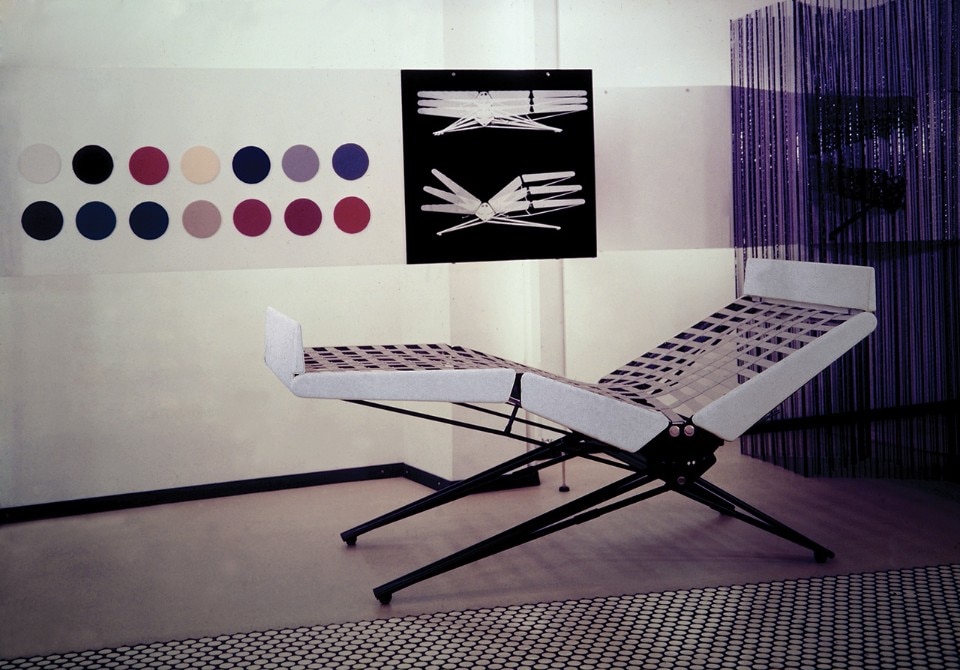
Borsani and Mattei. A major contract
Some of the pieces designed by Osvaldo Borsani for Tecno: P32 armchair, P39 chair, D70 sofa, L77 beds, T58 chaise longue.
Photos by Edoardo Mari. Archivio Osvaldo Borsani
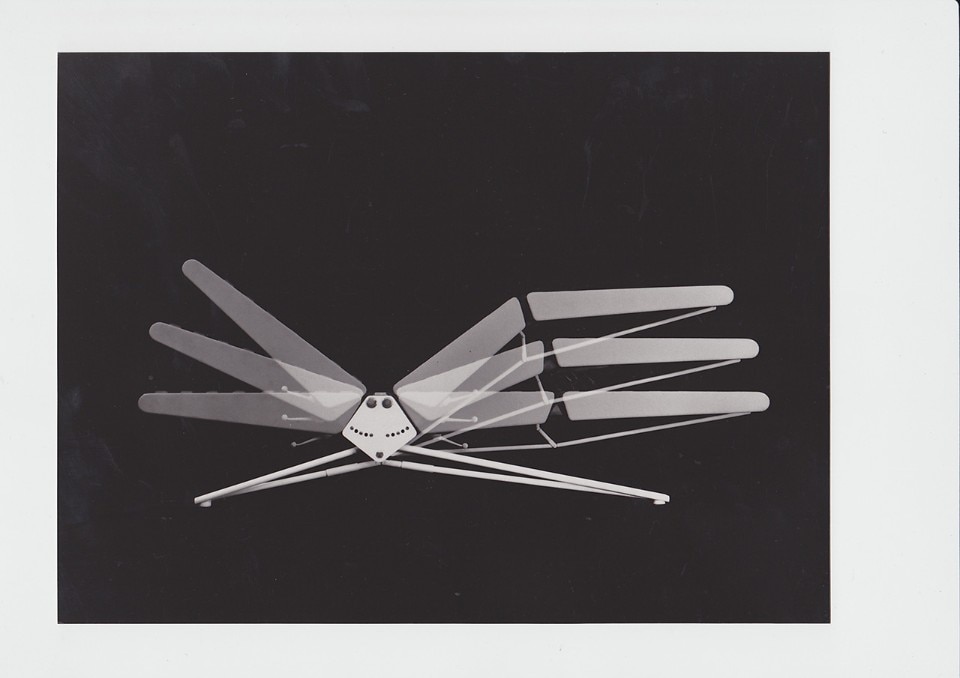
Borsani and Mattei. A major contract
Some of the pieces designed by Osvaldo Borsani for Tecno: P32 armchair, P39 chair, D70 sofa, L77 beds, T58 chaise longue.
Photos by Edoardo Mari. Archivio Osvaldo Borsani

Borsani and Mattei. A major contract
Some of the pieces designed by Osvaldo Borsani for Tecno: P32 armchair, P39 chair, D70 sofa, L77 beds, T58 chaise longue.
Photos by Edoardo Mari. Archivio Osvaldo Borsani
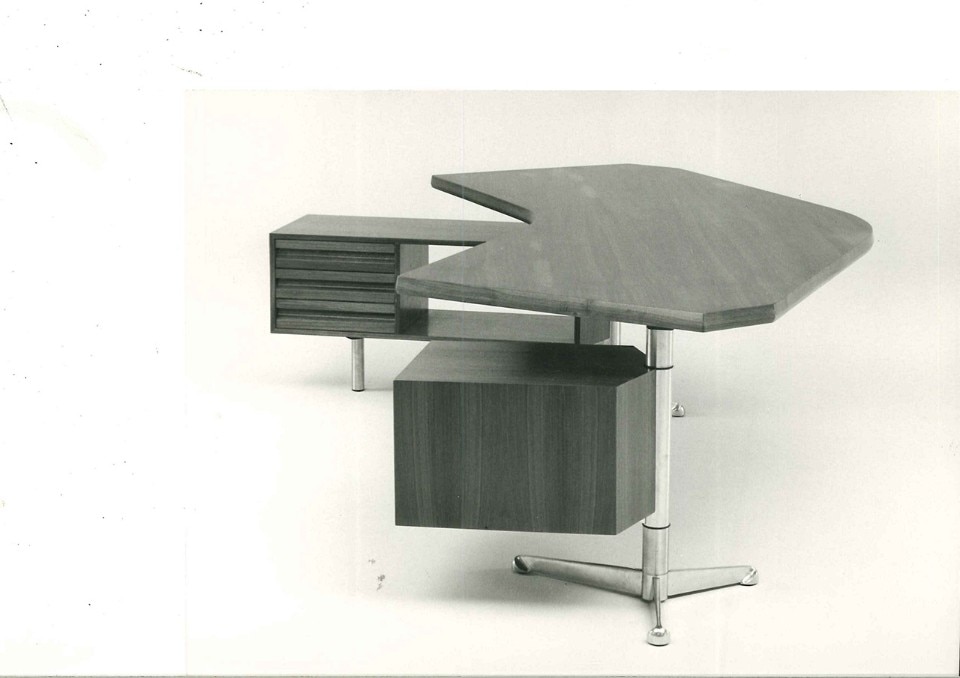
Borsani and Mattei. A major contract
Some of the pieces designed by Osvaldo Borsani for Tecno: P32 armchair, P39 chair, D70 sofa, L77 beds, T58 chaise longue.
Photos by Edoardo Mari. Archivio Osvaldo Borsani

Borsani and Mattei. A major contract
Some of the pieces designed by Osvaldo Borsani for Tecno: P32 armchair, P39 chair, D70 sofa, L77 beds, T58 chaise longue.
Photos by Edoardo Mari. Archivio Osvaldo Borsani

Borsani and Mattei. A major contract
Some of the pieces designed by Osvaldo Borsani for Tecno: P32 armchair, P39 chair, D70 sofa, L77 beds, T58 chaise longue.
Photos by Edoardo Mari. Archivio Osvaldo Borsani

Borsani and Mattei. A major contract
Some of the pieces designed by Osvaldo Borsani for Tecno: P32 armchair, P39 chair, D70 sofa, L77 beds, T58 chaise longue.
Photos by Edoardo Mari. Archivio Osvaldo Borsani

Borsani and Mattei. A major contract
Some of the pieces designed by Osvaldo Borsani for Tecno: P32 armchair, P39 chair, D70 sofa, L77 beds, T58 chaise longue.
Photos by Edoardo Mari. Archivio Osvaldo Borsani

Borsani and Mattei. A major contract
Some of the pieces designed by Osvaldo Borsani for Tecno: P32 armchair, P39 chair, D70 sofa, L77 beds, T58 chaise longue.
Photos by Edoardo Mari. Archivio Osvaldo Borsani

Borsani and Mattei. A major contract
Some of the pieces designed by Osvaldo Borsani for Tecno: P32 armchair, P39 chair, D70 sofa, L77 beds, T58 chaise longue.
Photos by Edoardo Mari. Archivio Osvaldo Borsani

Borsani and Mattei. A major contract
Some of the pieces designed by Osvaldo Borsani for Tecno: P32 armchair, P39 chair, D70 sofa, L77 beds, T58 chaise longue.
Photos by Edoardo Mari. Archivio Osvaldo Borsani

Borsani and Mattei. A major contract
Some of the pieces designed by Osvaldo Borsani for Tecno: P32 armchair, P39 chair, D70 sofa, L77 beds, T58 chaise longue.
Photos by Edoardo Mari. Archivio Osvaldo Borsani

Borsani and Mattei. A major contract
Some of the pieces designed by Osvaldo Borsani for Tecno: P32 armchair, P39 chair, D70 sofa, L77 beds, T58 chaise longue.
Photos by Edoardo Mari. Archivio Osvaldo Borsani

Borsani and Mattei. A major contract
Some of the pieces designed by Osvaldo Borsani for Tecno: P32 armchair, P39 chair, D70 sofa, L77 beds, T58 chaise longue.
Photos by Edoardo Mari. Archivio Osvaldo Borsani

Borsani and Mattei. A major contract
Some of the pieces designed by Osvaldo Borsani for Tecno: P32 armchair, P39 chair, D70 sofa, L77 beds, T58 chaise longue.
Photos by Edoardo Mari. Archivio Osvaldo Borsani

Borsani and Mattei. A major contract
Some of the pieces designed by Osvaldo Borsani for Tecno: P32 armchair, P39 chair, D70 sofa, L77 beds, T58 chaise longue.
Photos by Edoardo Mari. Archivio Osvaldo Borsani

Borsani and Mattei. A major contract
Some of the pieces designed by Osvaldo Borsani for Tecno: P32 armchair, P39 chair, D70 sofa, L77 beds, T58 chaise longue.
Photos by Edoardo Mari. Archivio Osvaldo Borsani

Borsani and Mattei. A major contract
Some of the pieces designed by Osvaldo Borsani for Tecno: P32 armchair, P39 chair, D70 sofa, L77 beds, T58 chaise longue.
Photos by Edoardo Mari. Archivio Osvaldo Borsani

Borsani and Mattei. A major contract
Some of the pieces designed by Osvaldo Borsani for Tecno: P32 armchair, P39 chair, D70 sofa, L77 beds, T58 chaise longue.
Photos by Edoardo Mari. Archivio Osvaldo Borsani

Borsani and Mattei. A major contract
Some of the pieces designed by Osvaldo Borsani for Tecno: P32 armchair, P39 chair, D70 sofa, L77 beds, T58 chaise longue.
Photos by Edoardo Mari. Archivio Osvaldo Borsani

Borsani and Mattei. A major contract
Some of the pieces designed by Osvaldo Borsani for Tecno: P32 armchair, P39 chair, D70 sofa, L77 beds, T58 chaise longue.
Photos by Edoardo Mari. Archivio Osvaldo Borsani

Borsani and Mattei. A major contract
Some of the pieces designed by Osvaldo Borsani for Tecno: P32 armchair, P39 chair, D70 sofa, L77 beds, T58 chaise longue.
Photos by Edoardo Mari. Archivio Osvaldo Borsani

Borsani and Mattei. A major contract
Some of the pieces designed by Osvaldo Borsani for Tecno: P32 armchair, P39 chair, D70 sofa, L77 beds, T58 chaise longue.
Photos by Edoardo Mari. Archivio Osvaldo Borsani
In this way, the space became continuous, in terms of function, techniques and materials. Borsani proposed an interior subdivision mainly through modular cabinets positioned along the lines between the connecting spaces and the offices. All is made with a massive use of wood as the dominating material, which visually links the partitions with the more moveable furniture such as desks. Tecno included made-to-measure pieces and also a substantial number of standard products that were the proud accomplishment of the company’s recently created range, such as the P32 armchair and the D70 sofa. The principle guiding Borsani in the interior design was to make an entire system of furniture for each different type of room. It is seen here in the offices and also in the ENI apartments for company use, for which he created the L77 chaise-longue that flattens to become a bed. He favoured the concept of an overall coordinated, full set of pieces, a visual continuum obtained by using matching elements and materials.
Tecno’s design and manufacturing stint with Enrico Mattei for ENI was a fundamental springboard from which to take up the challenge of other special projects, grandi lavori where clients were offered a particular combination of technological design, furniture type and shape. All was rooted in the quality production that became a constant element in the designs conceived and made for Tecno by Osvaldo Borsani.
Opening image: the P32 armchair designed by Osvaldo Borsani for Tecno (1956)


